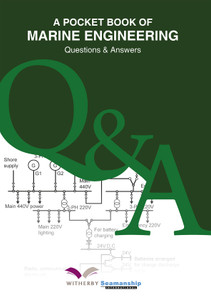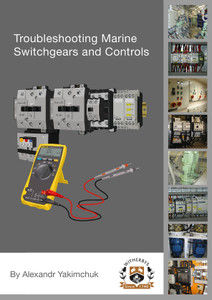
This is a practical guide for marine engineers on completion of the wide range of marine reports. It discusses conducting a survey and gathering information, conforming with legal requirements, writing a complete and effective report, text formatting and presentation of diagrams and photographs.
A marine engineer or surveyor must be technically competent, but it is equally important to be able to present findings in a clear and well written report.
This publication demonstrates best practice to help practitioners improve report writing skills and techniques. It advises on every stage of the reporting process, from receipt of instructions, assessing the purpose and type of the report, evidence gathering and interviewing, observing the correct protocols, structure of the report, writing style, use of terminology versus jargon, etc.
The appendices present 11 completed sample reports, including pre-purchase condition surveys, damage reports, off-hire survey report, personal injury investigation report, speed and angle of blow assessment report, etc.
IMarEST members, please enter 'IMAREST' as Promotional Code during checkout for your members discount.
Professional marine engineers are frequently required to issue a report as a consequence of an event or project. Such reports may be requested from within a company or by a particular external party or client.
Many report authors agree that 50% of the work is carrying out the fact finding or research and 50% is compiling the report. It is therefore not sufficient to be technically capable alone, the author must also have good report writing skills. This publication will demonstrate best practice to help you improve your report writing skills.
A report is often the author’s product for which he is receiving a fee. As such the report reflects the quality of the author’s work and his company. In the same way, a quality report for a large survey can often establish a good reputation. A poor quality report can ruin a career. The author should always bear in mind that another mariner may follow in his footsteps to do similar work. Likewise, your report when issued may be passed to other parties after your client.
No matter the amount of money involved with respect to any issues covered by the report, it should be accurate.
Writing style should be efficient, ie using the minimum number of words to get your message across in a readable, clear and concise manner.
You are the eyes and ears of your client and your duty is to convey a true picture of what you have found during your assignment. Ideally, the client, ie the person reading the report, should be able to see what the author has seen by reading his words alone, without any diagrams or photographs.
Just as there are many skills required to complete a survey or project, there are many factors which contribute to a good report. A good report is dependent on the evidence gathering process. The quality of the evidence, together with a well written and presented report, will ensure the right product.
Chapter 1 – Introduction
1.1 The many types of report
1.2 Receiving your assignment
1.3 Conformance
1.4 The purpose of a report – for whom are you writing the report?
1.5 Information required and sources
1.6 Preparing for the survey
Chapter 2 – The Basis of the Report
2.1 The report as a legal document
2.2 Discovery
2.3 Evidence
2.4 Protocols
2.5 Terms and conditions of service
2.6 Caveats and disclaimers
2.7 Professional indemnity insurance
2.8 Limiting liability
2.9 Copyright issues
Chapter 3 – Preparing for the Report
3.1 Interviewing skills
3.2 Facts and opinions
3.3 Aide memoires and laptops
3.4 File management
3.5 Good written and spoken communication
3.6 Tone of the report
3.7 Terminology versus jargon
3.8 Multiple consultants
3.9 Delegating
3.10 Signing the report
3.11 References
Chapter 4 – Report Types
4.1 Vessel inspections
4.2 Specific requests
4.3 Pro forma reports, eg container surveys
4.4 Pre-purchase condition surveys (PPCS)
4.5 P&I Club surveys
4.6 Machinery damage surveys
4.7 Hull damage surveys
4.8 Charterers’ inspections
4.9 Cargo surveys
4.10 Container damage surveys
4.11 Collision damage reports
4.12 Specialised reports, eg heavy lift, tow approvals, etc
4.13 Personal injury and accident investigations
4.14 Expert opinions
Chapter 5 – Writing the Report
5.1 Structure
5.2 Abstracts and executive summaries
5.3 Table of contents
5.4 Spelling and grammar
5.5 Some simple rules to follow
5.6 Active and passive writing
5.7 Voice recognition software
5.8 Report writing software
5.9 Typing
5.10 Typography
5.11 Typeface terminology
5.12 Tracking and kerning
5.13 The style sheet
5.14 Headlines
5.15 Numbering
5.16 Units
5.17 Use of brackets
5.18 Lists
5.19 Presentation and layout
5.20 Balance
5.21 Numerals and words
5.22 Date and time formats
5.23 Hooks
5.24 Colons and semicolons
5.25 Lack of colour
5.26 Widows and orphans
5.27 Paragraph spacing and indentation
5.28 Diagrams
5.29 Photographs
5.30 Accurate descriptions
5.31 Use of spreadsheets
5.32 Notes
5.33 Appendices and annexes
5.34 Binding the report
Chapter 6 – Touch Typing
Some useful references
Appendices
Appendix 1 – Specimen Pre-purchase Condition Survey Report for a Merchant Vessel
Appendix 2 – Specimen Pre-purchase Condition Survey Report for a Pleasure Craft
Appendix 3 – Specimen Machinery Damage Report
Appendix 4 – Specimen Hull Damage Survey Report
Appendix 5 – Specimen Off-Hire Survey Report
Appendix 6 – Specimen Collision Damage Survey Report
Appendix 7 – Specimen Speed and Angle of Blow Assessment Report
Appendix 8 – Specimen Tow Approval (Trip in Tow) Report
Appendix 9 – Specimen Heavy Lift Survey Report
Appendix 10 – Specimen Personal Injury Investigation Report
Appendix 11 – Specimen Vessel Inspection Report
IMarEST
IMarEST is the first Institute to bring together marine engineers, scientists and technologists into one international multi-disciplinary professional body.
Here you will find all the information you need about who we are, what we do and why we do it. You can also find out how IMarEST is governed, learn about the history of IMarEST, founded in 1889, and discover how our associated charity, The Guild of Benevolence, works to support those in the marine community requiring financial support.
https://www.imarest.org/about-imarest
Mike Wall joined Cunard Line as a marine engineer apprentice at the age of seventeen, eventually reaching the rank of Chief Engineer, with service aboard many different types of ship.
During his career Mike obtained a Class 1 marine engineer’s certificate of competency, a Bachelor of Science in Maritime Studies and Master of Science degree in Shipping and Maritime Studies. Experience was gained in most areas of shipping with eight years as a lecturer in Maritime Studies, culminating in five years as Senior Lecturer as Warsash College of Maritime Studies, UK.
Twenty years’ experience was gained then in hull, machinery, cargo and condition surveys in the USA, New Zealand, Fiji and South East Asia. Mike is also a qualified Mediator, registered both in the UK and Hong Kong.
- Number of Pages:
- 311
- ISBN:
- 9780956560056
- Binding Format:
- Paperback
- Book Height:
- 240 mm
- Book Width:
- 165 mm
- Weight:
- 0.9 kg
- Author:
Mike Wall
- Published Date:
- August 2019
- Preview:
- Yes
- Publication Date:
- August 2019





